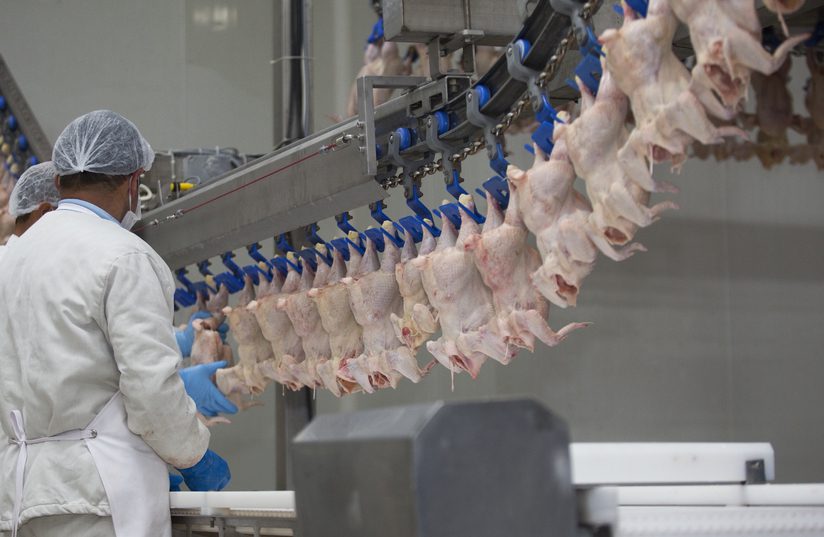Our Monoculture Food Supply is a Potential Coronavirus Calamity

Grocery stores across the United States emptied out this past week, after news regarding the rampant spread of Covid-19 frightened consumers and urged them to stock up on their staples. Now supermarkets are scrambling to restock their shelves. Federal USDA officials and agribusinesses—including meat inspectors, retailers, distributors, and farm groups—are assuring concerned Americans that our food supply is “holding steady,” despite stress from increased demand.
But there’s still a sense of tenuous balance and increased pressure at this time. Tightened border travel between the U.S. and Mexico caused some to worry about the ability of agricultural foreign guest workers to enter the country. (At this point, it appears that most consulates will continue to process new and returning workers.) Many agribusinesses and farmers are worried about the impact the spread of the virus might have on their operations—on the workers necessary to milk dairy cows, say, or to keep a slaughterhouse in order.
And these fears do not take into account the impact that widespread infection with the virus could take on those who distribute food. Long-distance travel is the norm in our food system. Hundreds (if not thousands) of miles carry food to our plate: “it is not only tropical foodstuffs, such as sugar, coffee, chocolate, tea, and bananas, that are shipped long distances to come to our tables,” The Center for Urban Education About Sustainable Agriculture notes. “It also fruits and vegetables that once grew locally, in household gardens and on small farms.”
As I’ve talked to farmers and local food advocates over the years, there’s always been an argument out there that local-food sovereignty and diversity are not just important for our health, for the environment, or for the soil—but that they are also important to national security. Diverse, strong, and local food sources are integral to the support of the communities that live there, in case global (or even national) crises threaten the normal food distribution systems that so many rely on. The thousands of miles that lie between cities and their food supply represent a danger we need to reckon with.
This week, it’s become clear to many Americans that this highly consolidated, monoculture-based food system is at least somewhat fragile—and thus dangerous in times of calamity. Diversity should not just extend to the types of things we grow in the U.S., but also to the sizes and sorts of agricultural entities we represent. This hodgepodge—farms, dairies, ranches, slaughterhouses, packing and distribution facilities, grocers and markets, delivery services and roadside stands—could offer us elasticity and strength. If Costcos and Wal-Marts are able to bear the brunt of the nation’s panic right now, good for them. But if we could relieve some of that pressure and uncertainty by bolstering local markets and farm sales, it would both increase Americans’ peace of mind and help build resiliency into our food system.
Yet here in the U.S., we’ve used federal dollars to weaken this sort of food system. We’ve encouraged agricultural consolidation since the last century, urging farmers to “get big or get out,” fostering homogenization in the array of foods we grow and the types of farms and agribusinesses we represent.
Changing this would require a different attitude toward Farm Bill subsidies, crop insurance, the regulatory environment, and environmental policy. It would require a different attitude toward farmers’ markets—one that sought to protect their services at this time, in the same way that we are striving to protect the ongoing viability of our grocery stores. It would require reemphasizing local food sovereignty and empowering small communities to feed themselves, rather than reinforcing the cronyist system that currently puts the interests of large agribusinesses before the health of American consumers. (Consider, for instance, the fact that approximately 85 percent of Puerto Rico’s food supply is imported from abroad, primarily from the mainland U.S.—because of colonial policy. It is not hard to imagine the toll a pandemic might take on the island’s food security—and frightening to consider the implications.)
Imagine, in contrast, the comfort in knowing that five miles from your house, there’s a farm that will deliver a box of vegetables to your doorstep. (And that it is only one of several local options to choose from.) Imagine if, rather than depending entirely on a local supermarket’s freezer section (and thus also on a slaughterhouse hundreds of miles away) for your meat, you already had a half-cow in your freezer right now. Imagine if you could swing by the farmers’ market this Saturday, enjoy some fresh air, and pick up eggs, milk, and butter that had passed through only a few pairs of hands. Many of these markets work to provide fresh local produce to food stamp recipients, so that the food is not too cost-prohibitive. Most depend entirely on a local customer base to flourish and thrive.
Covid-19 will indeed cause us to question the systems we’ve previously taken for granted, trusted to always be there. Perhaps things will quickly return to normal in a few months—but perhaps there are a few things we should stop to consider more seriously, no matter how long this pandemic lasts. We are lucky to live in a country with plentiful cheap food. But we are, perhaps, unlucky to live in a country where locally-grown food is still only available in certain pockets of the country—and where it does exist, is often undervalued and underserved. Perhaps that is something we should change—and the sooner the better.